Green Line: In a rare first, govt asks city’s architects to weigh in on Karachi BRTS
Federal govt gives Rs16b for Surjani-Mazaar route, goal to finish September 2016
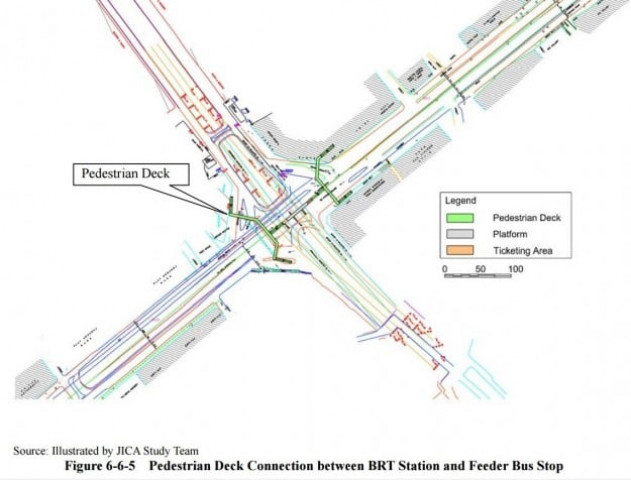
This 2012 illustration showing a possible intersection design for the Green line was rendered by the Japanese International Cooperation Agency which prepared the Karachi mass transit plan after extensive surveys. Source: JICA
But this is precisely what unfolded at the EOBI office on Thursday with its chairman Sualeh Faruqui at the head. The project he wanted feedback on is the Green bus-rapid transit line from Surjani to Quaid-e-Azam's Mazaar. This mass transit is the internationally accepted transport solution today and the Green line is one of nine lines the Japanese aid agency mapped for the city. Bahria is eyeing the Blue line and the Chinese the Yellow one. The Japanese have long been interested in the black Karachi Circular Railway. The ADB and ITDP have been involved on the Red line.
Read: The need for mass transit: Legislating a viable transport solution for Karachi
Karachi is the only megacity in the world that doesn't have mass transit and Nawaz Sharif gave the city Rs16 billion to do it. Almost half of this money is in the accounts of the company created to run development in the city: the Karachi Development Company Ltd. Using a public limited company means that these funds won't lapse if not used in government coffers by the end of the fiscal year.

The prime minister has tasked Faruqui, who used to work with him as secretary of economic affairs, to push through this project upon his posting back to Karachi. The Green line has been designed by EA Consultants Pvt Ltd which has submitted the environment impact assessment to the Sindh environment protection agency. They hope to start building in September and finish in one year. The design will be placed before the steering committee in a week's time and if all goes well, the bidding for the contract to build it will open at the end of this month, Faruqui told The Express Tribune.
Read: Will Karachi finally have a mass transit system?
Given that the Green line's design is being run through its final stages, Faruqui agreed to take feedback from the city's key planning minds. Invited to the discussion were architects Yawar Jilani of Arcop, Syed Akeel Bilgrami, Husnain Lotia and Shaista Khaliq, EA's Khawar Ghani, Aqeel Kapadia, Dr M Tahir Soomro (also a former director of Karachi's mass transit cell) and Tanveer Ahmed, the Institute of Architects of Pakistan's Komal Parvez and Shahab Ghani, Farida Ghaffar of NED University, Nooruddin Ahmed of the Institute of Engineers of Pakistan, Mumtaz Jilani of Nespak, Roland deSouza of Shehri-CBE, Zahid Farooq of the Urban Resource Centre, development specialist Fazal Noor and several architects from Arcop.
"We have been looking forward to this interface and it's unfortunate that presentations of this nature don't happen," remarked Yawar Jilani. Karachi is a city starved for planning but generally requests to the government from private planners have not been entertained.
After EA's Tahir Soomro presented the design, the main feedback from the planners was that an overarching authority is essential to manage all the BRTS lines. But the Sindh Mass Transit Authority law is in limbo for now. A centralised IT system to coordinate all bus fleet timings and other moving parts is needed. The elevated parts of the Green line should not destroy 60-year-old trees along the route. The architects also asked if there was a park-and-ride element to the design around the bus stations so people could leave their motorcycles and use the BRTS.

Fazal Noor pointed out that the design didn't seem to integrate local traffic and the mass transit. What about people who want to come from beyond the 500-metre catchment area? Will they take chingchis or buses to the BRTS stations? And more importantly, given that these areas have been declared high-density zones where real-estate development is expected, is the BRT built to accommodate future population capacities? But most of all, the experts stressed that the bus stations should not be built in isolation but factor in the culture and social needs of their surrounding environment.
What’s the plan?: The EA’s design for the Green Line
The Green line, which is expected to attract the highest ridership from the nine lines, has 10 major intersections. Sakhi Hasan intersection alone gets 380,000 vehicles daily. So EA Consultants Pvt Ltd is designing to ease the congestion by giving priority to BRT buses. According to EA’s Tahir Soomro, the buses have to compete with the existing public transport or the enterprise fails. The buses are air-conditioned. For tickets, no money will physically changes hands as passengers will use smart cards.
EA’s Khawar Ghani spoke about using structures that are “easy to build and cheap to construct and maintain or could be fabricated”. “We are not going to build monuments,” he said, “Something for which you need to give billions of rupees.” Sustainability is key. For example, EA has decided against using glass as dividers at the bus stations because no one will be able to clean it. Ghani pointed out this mistake being made in Islamabad’s BRT stations. “It traps heat and who will clean it,” he said.
The challenges for the Green line design are the electric pylons, existing U-turns, intersections and water lines. But EA is trying to come up with solutions. Another challenge is for the government to create an IT system that manages the entire BRTS network. Faruqui was cognisant of this crucial element. Integration, so that all the moving parts work in unison and standardisation, are essential for BRTS to work in Karachi, he said, adding, for example, “You can’t have a coin-operated system being used by one line and a card on another.”
Follow-up sessions with the private bus operators and city planners and architects are planned with the Sindh government teams working on the BRTS projects.
Published in The Express Tribune, July 25th, 2015.



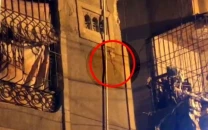
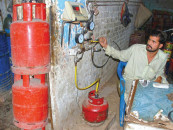
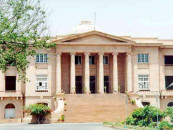
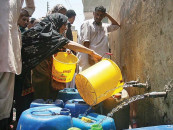












COMMENTS
Comments are moderated and generally will be posted if they are on-topic and not abusive.
For more information, please see our Comments FAQ